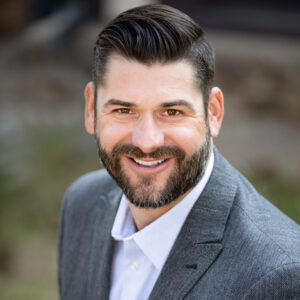The Art of Developing Agile Learners Through CTE
Seventeen-year-old Sandra can’t wait for school to start each day. Perhaps that’s because her school day looks nothing like what most of us envision a classic high school schedule to be.
Her morning begins with Advanced Placement calculus, but as soon as the class ends, she heads to her half-day internship at a local electronics manufacturing plant. There, depending on the day, she alternates between sitting in on executive team strategy meetings and working on the manufacturing floor alongside hourly workers assembling circuit boards.
At the end of her morning, Sandra sits with a senior engineer who acts as her mentor and discusses what she learned that day. The mentor gives her a few journal articles to read about the latest advancements in semiconductor technology. He says they can discuss the articles when they meet the following week. Sandra marks in her calendar to have the articles read by Sunday evening.
Sandra has a passion for engineering, and nothing she has experienced during her internship has cooled that ardor. But she has to confess to feeling conflicted because some of the other careers she’s been exposed to during structured visits arranged by her school hold great appeal as well. She’s had a chance to sit with some online sleuths at a cyber security firm, and that caught her interest. And a daylong visit to the Denver Zoo to shadow a veterinarian got her thinking about vet school as well.
Sandra gets back to school for a late lunch, attends three classes, spends an hour in the school’s maker-space working on a robotics project, then heads to volleyball practice. She gets home on time for dinner, then retreats to her room to do homework. She reaches first for her calculus book, but then picks up one of the journal articles instead.
Some students in my home state of Colorado are fortunate enough to have experiences similar to Sandra’s. Many more, however, continue to attend schools that follow the old model wherein schooling is confined within the walls of a single building.
What Sandra’s experience exemplifies is a model career and technical education (CTE) program. It’s a CTE program for a more agile future. A future that is unpredictable but also full of possibility for agile learners who are able to adapt and respond and continually learn in this Age of Agility.
We find ourselves at a moment in which learners must develop knowledge, skills, and competencies to succeed in an uncertain future and adapt to a dynamically changing world. While the pace of change is accelerating at an exponential rate, the needs of learners are also becoming more complex, and their interests increasingly more diverse.
That’s why it’s important to completely rethink what career and technical education looks like in our country. To many people, CTE, once called vocational education, conjures up memories of making muffins in a home economics class, or shop and auto-body-repair classes. In the worst ways, it was instruction for kids perceived not to be “college material.”
Much like our modern society, the best of CTE has evolved. In fact, the proper frame through which to view CTE is that it’s exactly the education every student needs. Not because we’re trying to make every student ready for a career, although most students will eventually need to get a job, but because CTE offers us the best examples of how learning happens.
Learning cannot be strictly confined to the walls of a school. It’s not comprised of class after class spent sitting in rows and absorbing material to be recalled and tested by how well students can fill a bubble. CTE is relevant, experiential, and meaningful.
Programs have been designed to include a healthy mix of academic challenges, hands-on, real-life work experience, and exposure to a host of possible careers that appeal to a wide range of students—whether they’re bound for a four-year college or something else. In other words, top-flight CTE is a school-wide program, one in which all students participate, to the benefit of all.
We also know that engagement and relevancy are critical, and on both counts, CTE has an advantage over the traditional model. Year after year, national student surveys conducted by Gallup show that fewer than half of U.S. students feel engaged by school or hopeful about their future. Hope, which Gallup found is a better predictor of student success than SAT scores or GPA, is in too short supply among students. Yet at schools where high-quality CTE is in place, truancy goes down and college-going rates rise.
And while CTE is often thought of as high school programming, ensuring that students are prepared for high-quality, rigorous, work-based learning experiences starts much earlier. The basic building blocks of literacy and numeracy skills students need to access this learning must be foundational, but it doesn’t need to be disconnected. Importantly, students engaging in high-quality career awareness and exposure earlier on in elementary and middle school grades benefit from the connections to business and civic leaders in their communities and the relevance that occurs when the classroom becomes a place where reading, writing, and math come to life.
In Colorado, we’ve learned a great deal about what makes CTE work well—for students, employers, and school systems. We’ve extracted five key steps to building world-class programs: understand your supply and demand; create multiple pathways into postsecondary education and career; come to the table as a collaborator; reimagine how you define and measure success; and empower students to realize their potential. All of these are scalable throughout American communities.
This post was originally published on The Thomas B. Fordham Institute Website and is a part of a running series.

